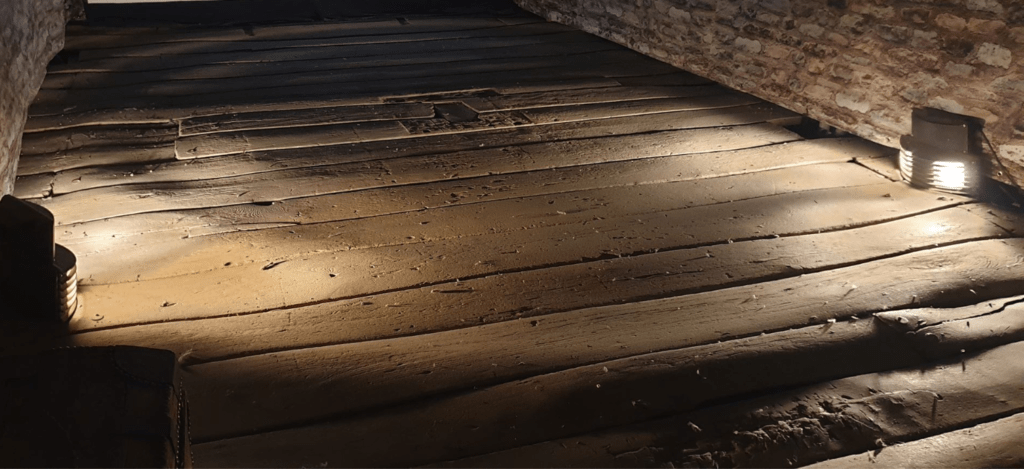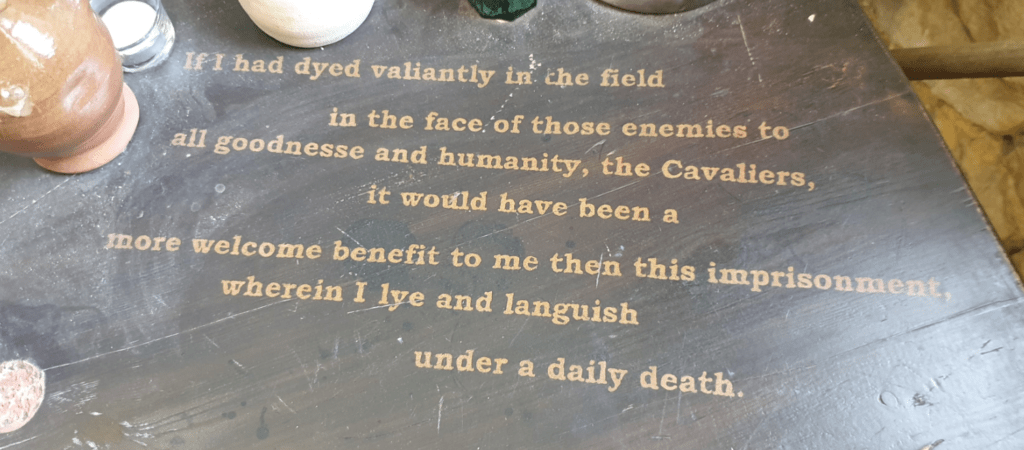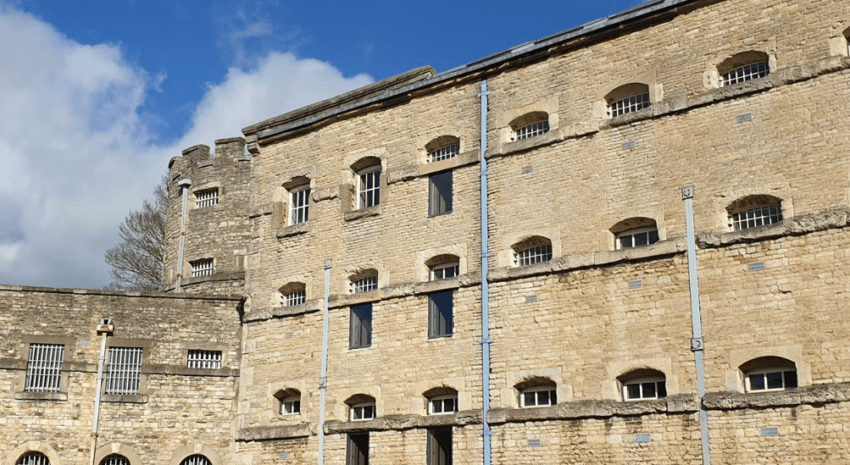
In central Oxford, hemmed in by 60s Bauhaus installations and chain restaurants, sits almost a thousand years of history, beautifully preserved and, at times, wonderfully disturbing. Oxford Castle (and latterly prison) is still an incredible building, despite part of it having been revamped into a hotel. Apparently the attraction of staying in a prison, didn’t die out with the Victorian poor.
As you walk into the grounds, the gentrification is obvious. Neat and tidy lawns and seasonally appropriate daffodils belie the history of an area that originally housed the gallows. A location rarely escaped by prisoners sentenced to die as, after 1868, an Act decreed: “all prisoners sentenced to death for murder be executed within the walls of the prison in which they were being held, and that their bodies be buried in the prison grounds[1]”.

No sanctified ground or passing prayers for these miscreants and yet, looking at the manicured topiary and pristine pathways, these hidden graves are maintained far better than that of many a more modern innocent burial: we wonder if the residents know…
Onwards past the exercise yard, on that day a beautiful suntrap, to the eye-catching debtors tower: a period feature addition to the hotel. Then, the castle itself. Much has been repaired, or added in the case of glass fronted places, and enhanced with inlayed metal timelines, imitation stocks and pillories. Eye catching, certainly. We paid our entry and were given a punishment number ( we’ll get on to that shortly) and were told that the tour would begin in 20 minutes, just enough time to walk to the top of the old motte.
The Motte is a manmade hill, made out of the earth excavated from the original moat digging around 1070, with a few interesting archaeological features still present, including an enclosed well and a stone basin. The pinnacle of the motte allows for an unforgettable view of the spires of Oxford (admittedly slightly marred by a dozen or so cranes, but what can you do!).

We meandered down the daffodil dappled mound to start the tour, on the way discovering in the café that our “punishment number” referred to a real person and real punishment, the pillory. The pillory was a stand set up in the centre of a village or town, in which the head and wrists of a prisoner would be restrained. Often confused with the stocks (a board used for securing the wrists and ankles), a prisoner would be forced to endure up to three days in the pillory, hunched over, with crowds throwing refuse, faeces, rotten foods and even loose masonry at the them. In some cases, the incumbent sufferer would have had their ears nailed to the board as an additional, permanent reminder of their transgression. Particularly when the pierced perpetrator had to free themselves using a knife.
The tour began with us being led through a wrought iron gate, into the base of a rather dingy tower. We were accompanied by a fantastic costumed tour guide (Alistair) who breathed life into what could have been potentially a dry and dingy subject. He led us past the warped wooden floor, noticeably worn from the countless footfalls of inmates, as they turned a giant crank to drive water through the prison. We were told they occasionally died in the process.

We were then taken up the last remaining tower of the original castle (over 100 steep curved steps!) and were treated to the story of Matilda and Stephen; daring escapes and royal betrayals with added horse bones and white outfits for stealth! The importance of this castle was expressed with a storytelling that transported you through the ages. From the tower we meandered to the crypt, which made me a little nervous when the lights dropped out suddenly, whilst I was stood in the “haunted” bit – thank you very much Oxford Prison, my heart has just about started to beat again.
And then, to the section we were most drawn to, the cells.

Each door was fitted with a viewing hatch, referred to by some inmates as the dreaded all-seeing eye, and these rooms were cramped and claustrophobic. Whilst only a county prison (for those confined for months rather than years) the temperature, cold brick walls, lack of fireplaces and metal mattress-less bedframes speak to centuries of neglect of the prisoner class. Typhus spread like wildfire, at one point relieving an entire court of their lives, and the starvation diets rendered the inmates docile, and, often, deceased.
I would love to share with you every single thing we learned, each tale and myth that was shared with us, but that would ruin the experience. An experience we thoroughly recommend for any historian or prison aficionado.

Spookiness
👻 👻 /5
Education
📖 📖 📖 📖 📖 /5
Value for money
💰 💰 💰 💰 /5
Overall
[1] https://en.wikipedia.org/wiki/Capital_Punishment_Amendment_Act_1868
